5 Mysterious Structures from the World’s Smallest Architects
The rainforest is a giant trove of mysteries. When zooming into the micro world, I saw natural creations which appear so man-made, that they have to be showcased here as nature’s smallest architects. This post will showcase the log cabin, jungle tent, cage fortress, poop barricade, and the mysterious web tower.
Most of the photos here were shot in Singapore, with the exception of Architect #4 from Malaysia and Architect #5 from Peru. I have more questions than answers here. Hopefully someone with the expertise can share their knowledge with us here. 🙂
Special thanks to Jeff Cremer from Rainforest Expeditions for kindly allowing me to use some photos for Architect #5!
Bagworm moth larva (Psychidae)
The larva of this bagworm moth encases itself with a beautiful spiral pyramid of twigs as it grows, starting from smaller twigs when young, and stacking larger twigs from the bottom as it grows.
Bagworm moth larva (Psychidae)
Amazingly, the stacked spiral is done so neatly that it looks almost man-made and resembles a log cabin. This is the same log cabin as above, and there is no discernable difference when viewed from other angles. How did it manage to create such symmetry? How did it get branches of just the right size to create the log cabin?
Bagworm moth larva (Psychidae)
The symmetry does not seem to be practised by all specimens. This one appeared to be stacked haphazardly, but there is still an obvious progression of thickness of the “logs”.
Bagworm moth pupa (Psychidae)
This one had an exceptionally long base log. Is it possible that it was in the process of “sawing” it off to the right length?
Bagworm moth larva (Eumeta sp. – ID by Roger Kendrick)
Not all log cabins are stacked in a pyramid fashion. Some lay the branches out in parallel to create a cylindrical fortress sticking out almost vertically from the leaf or branch surface.
Bagworm moth larva (Eumeta sp. – ID by Roger Kendrick)
Some, however, appear to be laid out lazily on a branch. Perhaps this one was in the process of “upgrading” its log cabin?
Bagworm moth empty coccoon (Eumeta sp. – ID by Roger Kendrick)
Bagworms can be subjected to parasitoids too. Some tachinids may lay their eggs in the psychid larvae, and take over the host when the log cabin is built. Is this a result of a parasitoid or the leftover cocoon of a successfully emerged male bagworm moth?
Architect #1: The Log Cabin
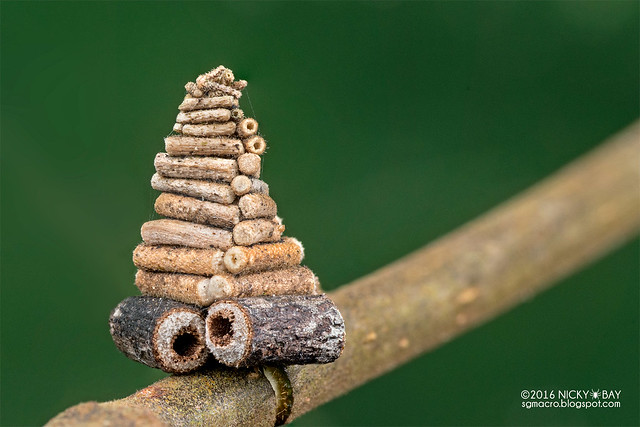

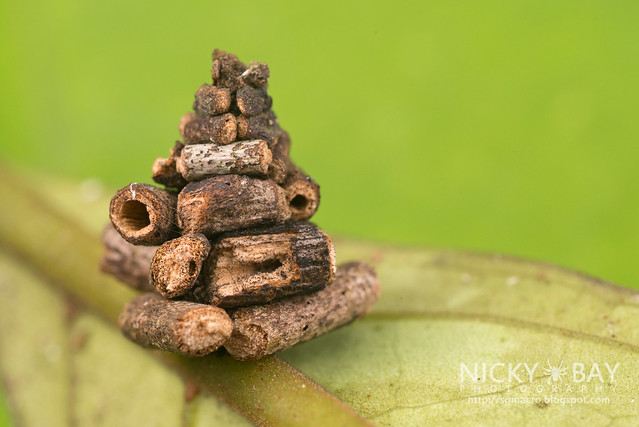
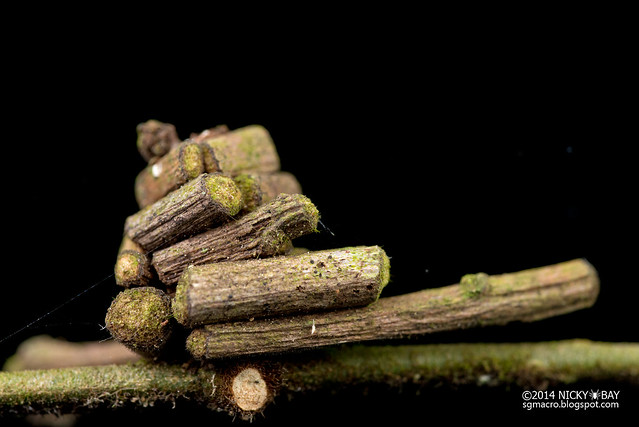
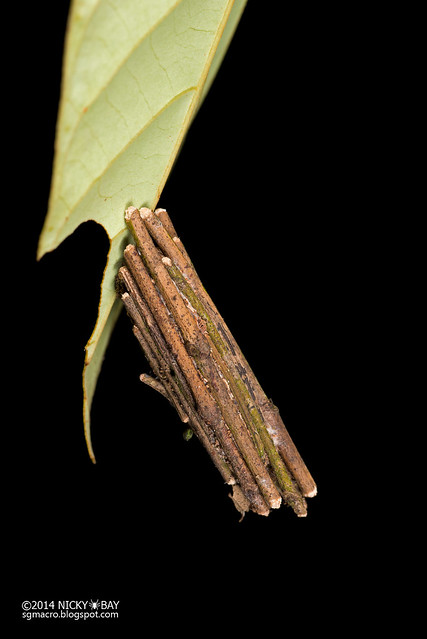

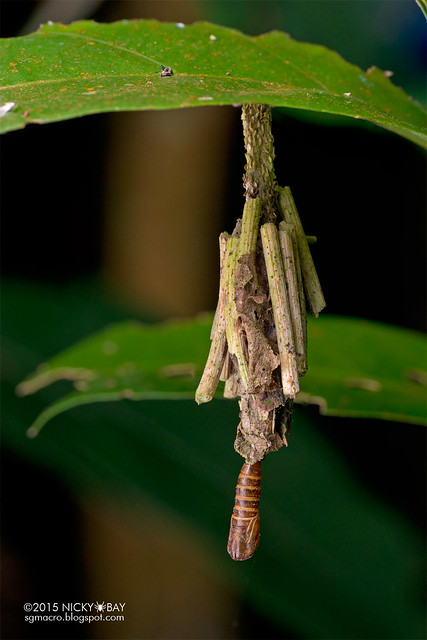
Bagworm larva (Psychidae)
Not all bagworms make use of branches and twigs to build their protective cases. This psychid makes use of dead leaves and layers them into a tent.
Bagworm moth larva (Psychidae)
Covered by layers of silk, we can see a bit of what looked like the larva beneath the tent. This could also be the leftover case of an emerged bagworm moth.
Bathworm moth larva (Psychidae)
Some tents are highly elongated, much like the Eiffel Tower. In some parts of the world, they called this the jungle pagoda.
Bagworm moth larva (Psychidae)
And some are just… artistically messy.
Bagworm Moth (Amatissa sp. – ID by Roger Kendrick)
While female bagworms never leave their constructed cases, the males will eventually emerge as adult moths through the tip of the casing.
Architect #2: Jungle Tent
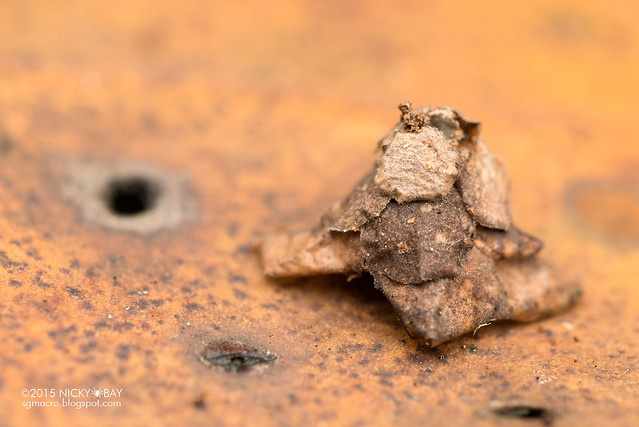
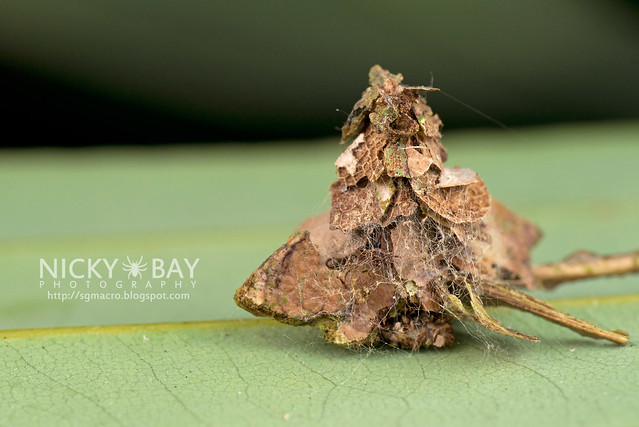


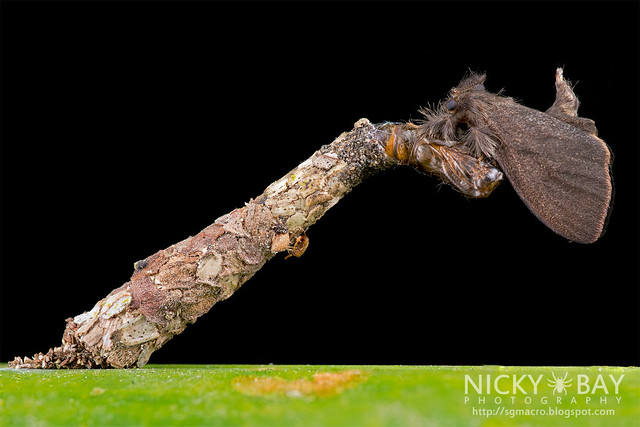
Arctiine moth pupa (Cyana sp.)
Moths of the Cyana genus pupate in a constructed cage woven from the caterpillar’s hairs or spines, with every cross-section held together with silk.
Moth (Cyana sp.)
The caterpillar sports lengthy hairs which would be used to construct the cage when it is ready to pupate.
Arctiine moth pupa (Cyana sp.)
The cage has an open square mesh. As single strands of hair are not long enough, the caterpillar attaches the hairs end-to-end to construct the side of the cage.
Arctiine moth pupa (Cyana sp.)
The caterpillar suspends itself in the middle of the cage with silk for a good buffer from the cage surface. The mesh of curved setae (hairs) is remarkably strong, and will spring back into shape when pressure is exerted by probing predators on it while leaving the pupa safe and sound.
Arctiine moth pupa (Cyana sp.)
This pupa is almost ready to emerge, with the eyes, antennae and wings already visible. Interestingly, while the actual emergence has never been recorded in video, the pupa is able to exit the cage before emergence as the shell has always been found outside the cage. It appears that the 2 sharper ends of the cage are not woven together, and allows for a one-directional exit for the pupa.
Moth (Cyana sp.)
This is what an adult Cyana moth looks like.
Arctiine moth pupa (Cyana sp.)
Despite the strong physical properties of the cage, it is not fully protected against other predators, especially parasitoids which can lay eggs into the caterpillars in the larval stage before the cage is built. Some parasitoids lay eggs in the foliage in hope that they would be consumed by caterpillars which will act as their hosts.
Arctiine moth pupa (Cyana sp.)
Some may fail to pupate and encounter fungus growth in the process.
Architect #3: Cage Fortress

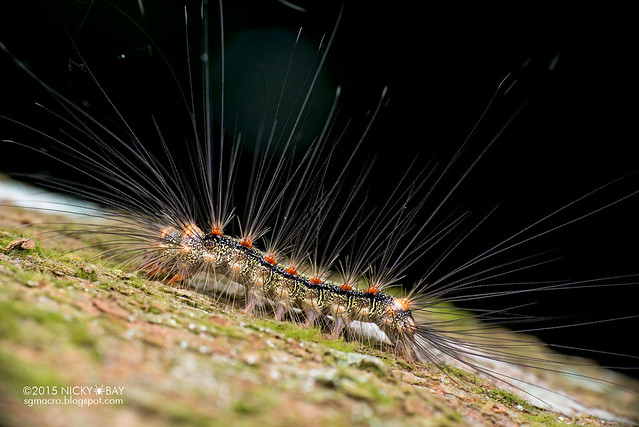
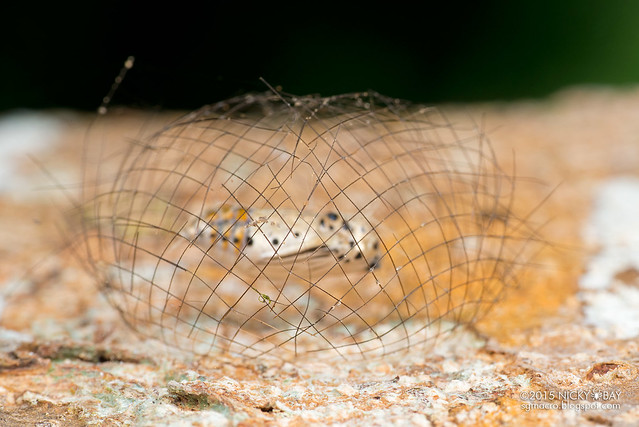
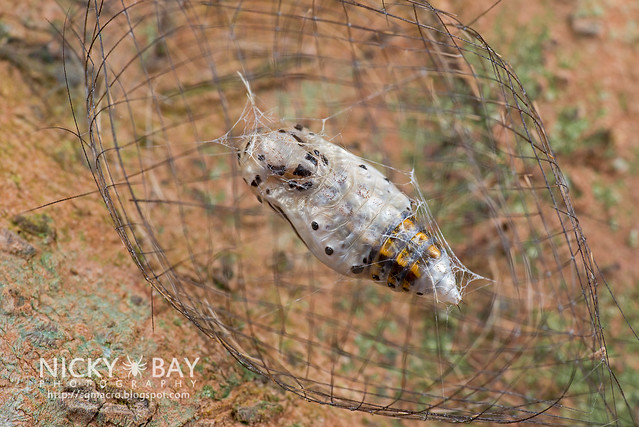
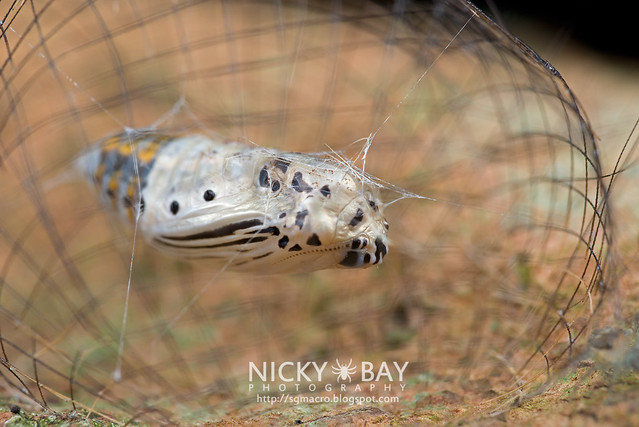
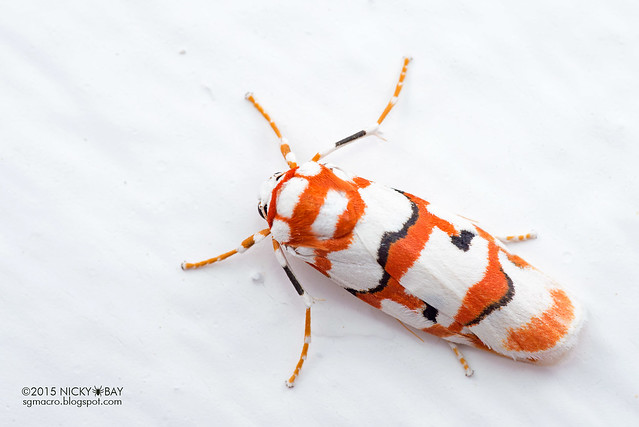


Poop barricade
I have only encountered this weird looking structure once. It appears to be a pupa wrapped with intricately woven layers of mesh, and finally surrounded by a barricade of black substance which I am assuming to be poop from the caterpillar during the larval stage. Does using a poop wall enhance its defense strategy? Does it emit a smell to turn predators off?? Nobody knows… yet!
Architect #4: Poop Barricade

Web tower structure ©2015 Jeff Cremer
Deep in a tiny island formed in the middle of the Amazonian River in Peru, a mysterious silk structure was discovered and had baffled scientists on what built it. It had a central tower with supporting silk lines, surrounded by an intricate silken fence. Entomologists believed it to be an egg sac of sorts.
Web tower structure
When I visited the island, I could only find the structures that had already been abandoned.
Web tower structure
This one appears to have been abandoned long ago, with just the silk fence remaining.
Web tower structure ©2015 Jeff Cremer
In 2013, a group of scientists traveled to the Peruvian Amazon to unravel this mystery. They collected samples and allowed it to hatch, and it revealed a cute little spider!
Web tower structure ©2015 Jeff Cremer
Til date, the ID of the spider is still unknown as the juveniles do not exhibit any characteristic features of any specific family yet. If you are keen to be the one to decipher the biology of this mysterious spider, contact Rainforest Expeditions to arrange a trip to Collpa Island and keep me updated!! 🙂
Architect #5: Web Tower
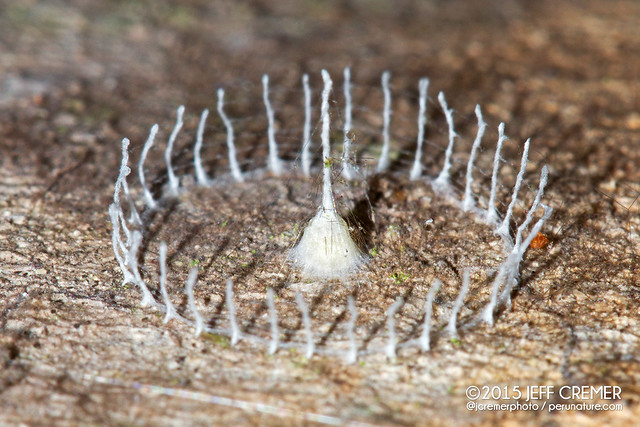
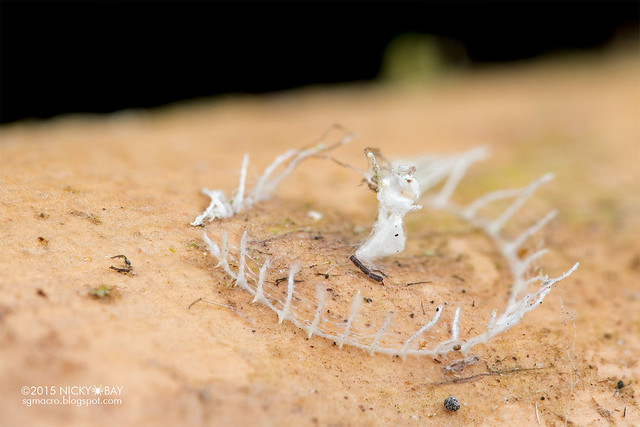
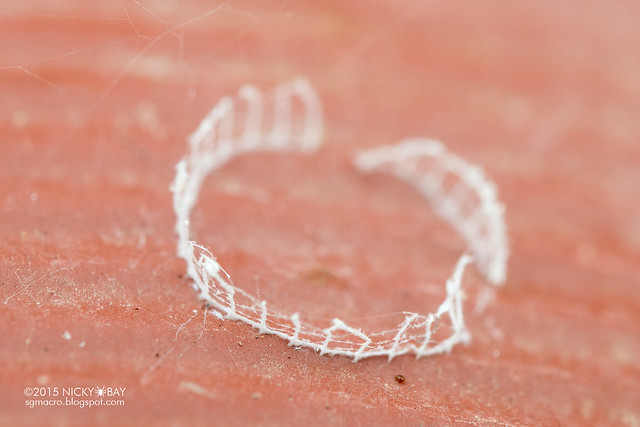
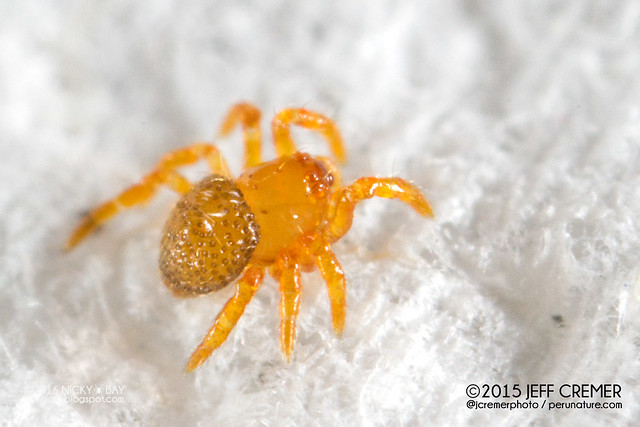
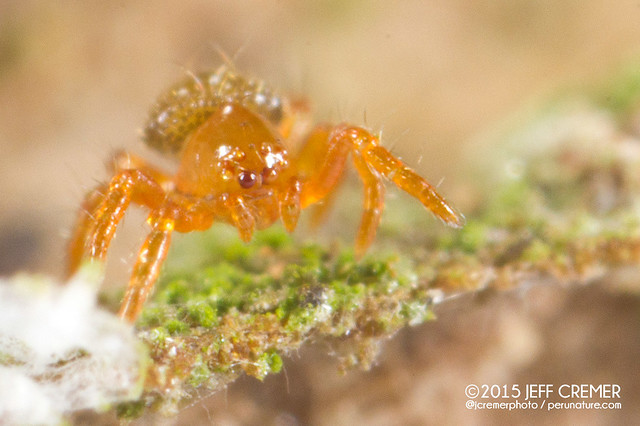
Conclusion
I am sure that the vast arthropod world could create many more mind-blowing architectural micro-structures and this is just a very small and limited list based on my personal encounters. Please share with us in the comments below if you are familiar with any of them. If you have any questions, please post in the comments below or contact me at nicky@bay.to.
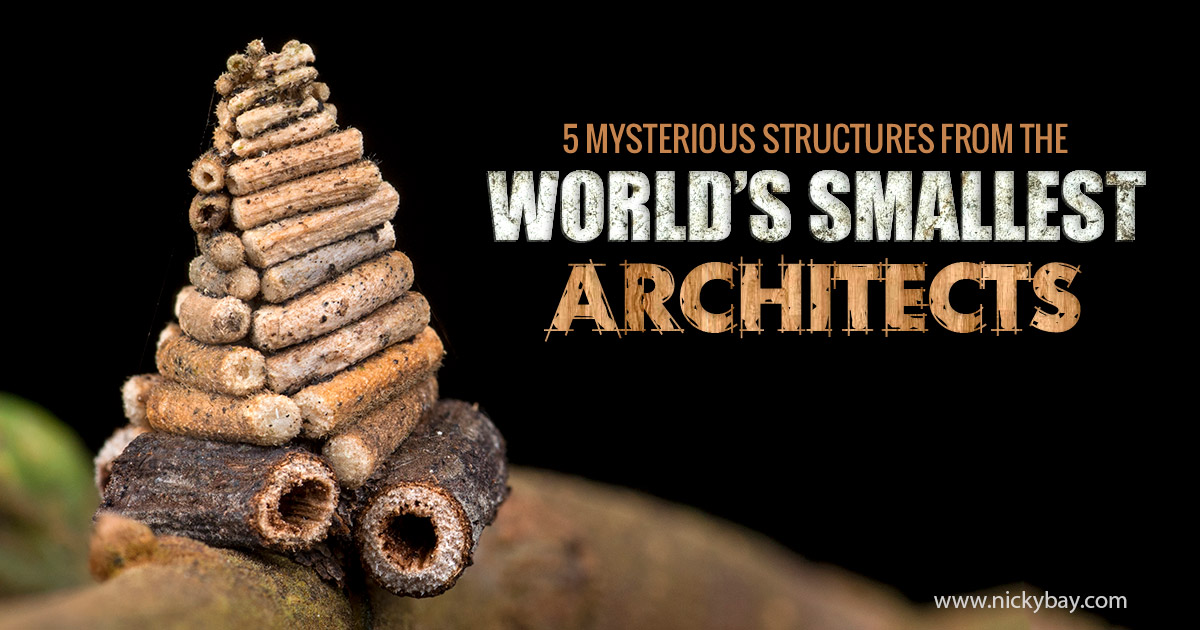


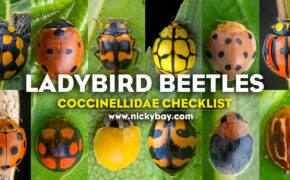
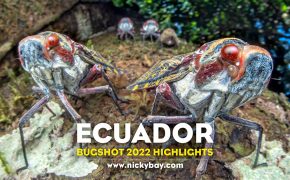
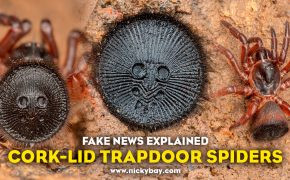
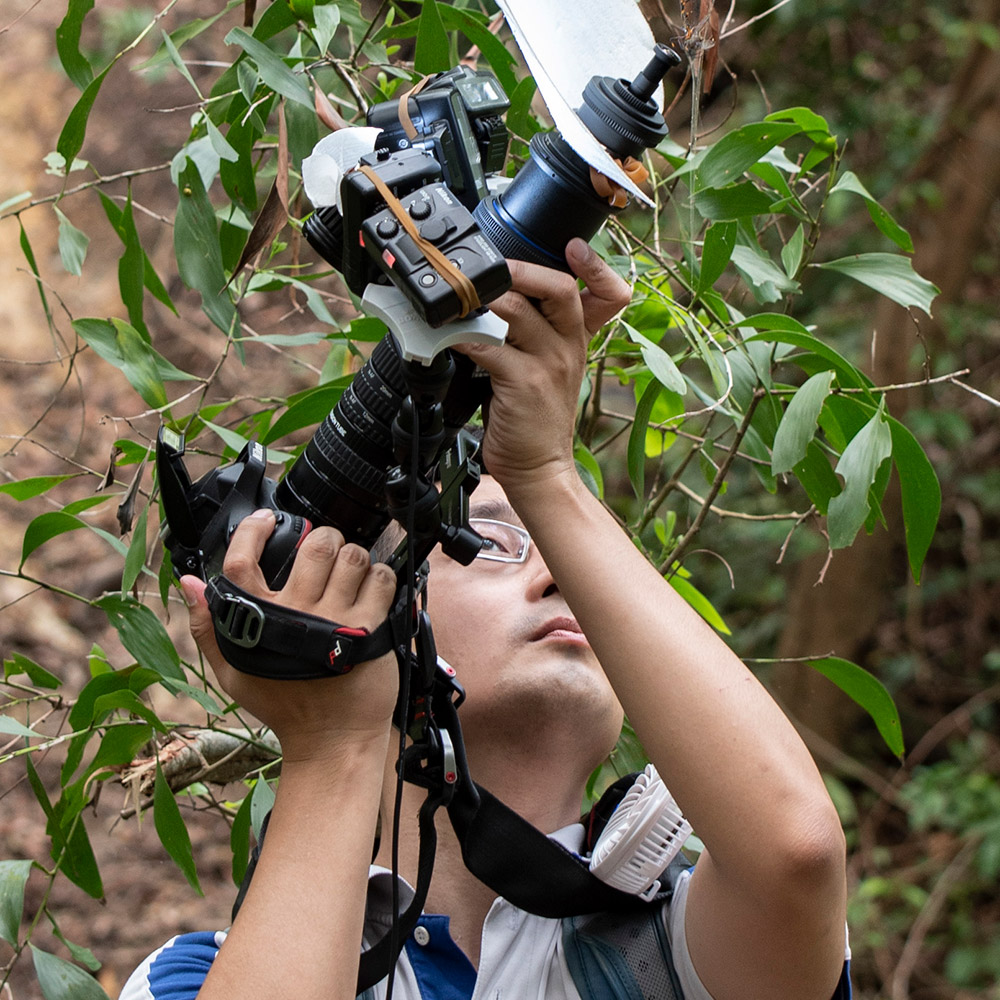









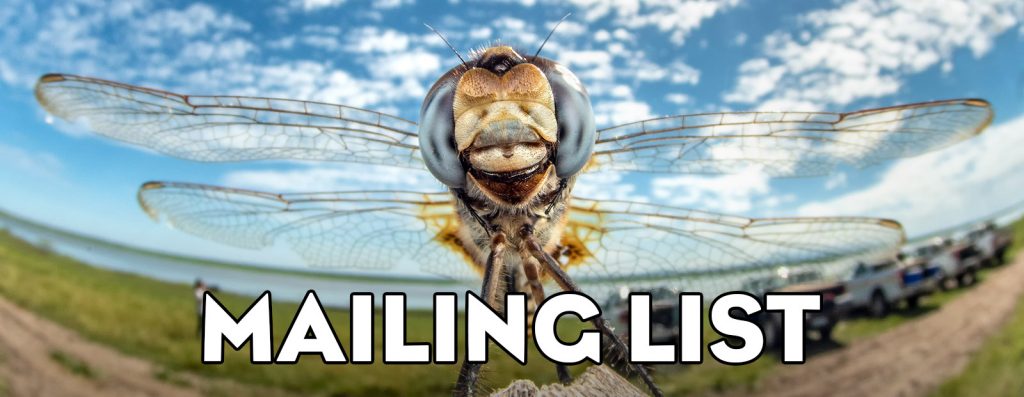
Maddio Jugend
Great work
Congratulations!
Isabella Loh
Awesome and brilliant compilation !!